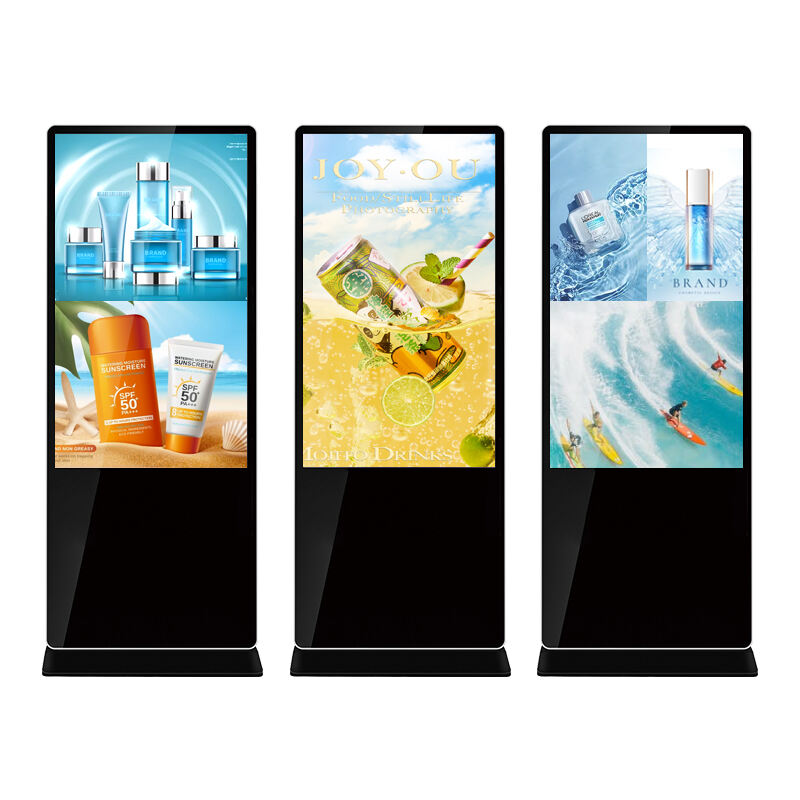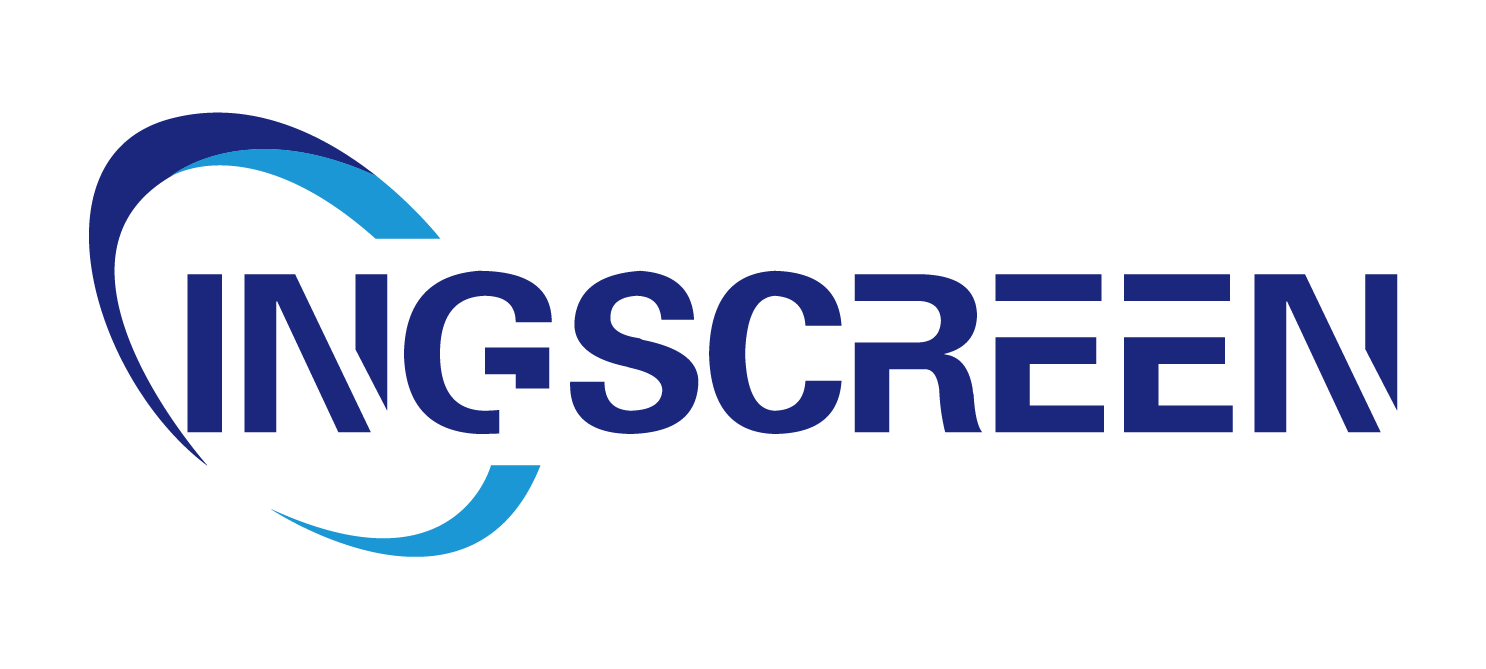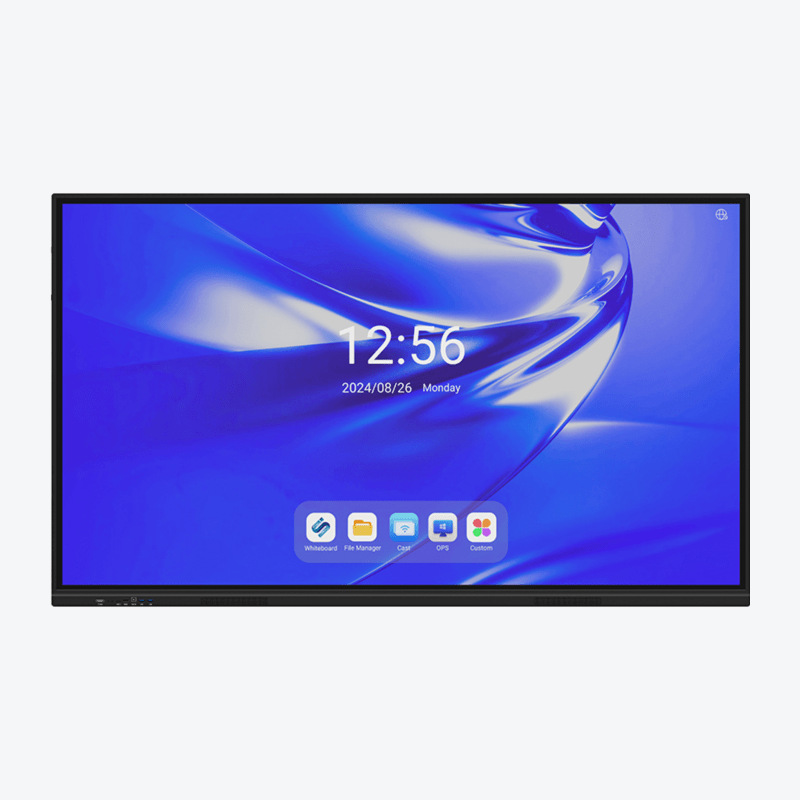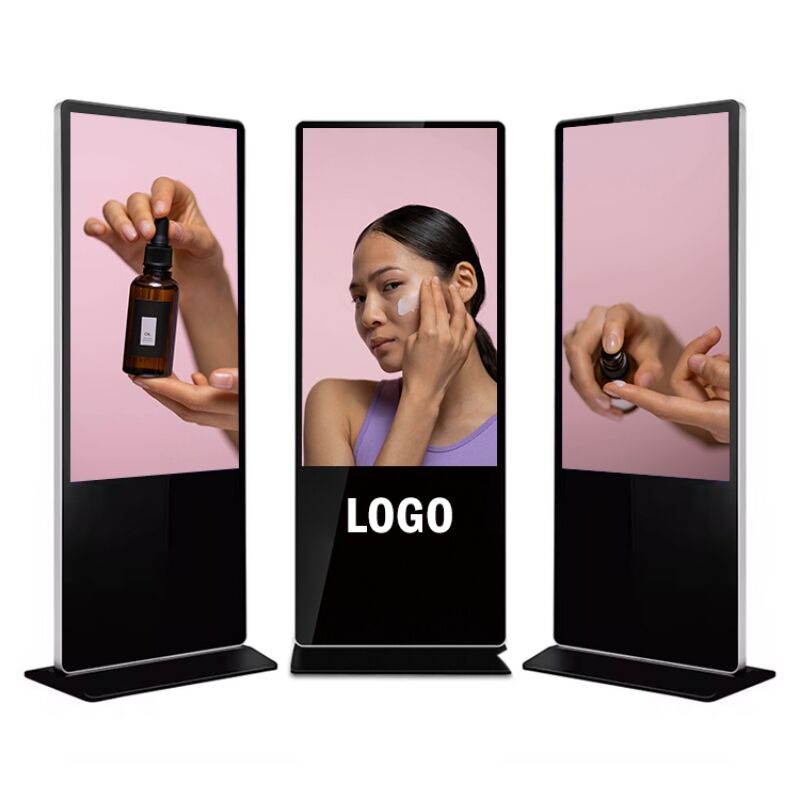Interactive Exhibits for Immersive Learning Experiences
Interactive kiosks are revolutionizing the way visitors engage with exhibits in museums, enhancing the learning experience through direct interaction. These digital kiosks allow visitors to interact with museum content dynamically, making learning more engaging than just reading static signs. According to a Forbes report, this form of interactive media is contributing significantly to the so-called "subscription economy," which attracts more visitors, including younger demographics, to museums. For example, the Penn State University All-Sports Museum's upgrade to interactive digital signage kiosks has allowed visitors to access a vast array of information on exhibits, promoting deeper engagement and enhancing the educational value of the visit. Studies show interactive engagement through kiosks significantly improves information retention, as visitors can visualize the content and interact with it directly, making their museum experience more memorable and impactful.
Augmented Reality Integration in Modern Kiosks
Incorporating augmented reality (AR) into modern kiosks revolutionizes visitor interaction by overlaying digital information in a captivating spatial context. AR technology empowers museums to provide interactive experiences that enhance visitor engagement. For instance, the National Geographic Museum successfully integrated AR to help visitors explore historic environments and experience being part of the exhibits without the need for physical interaction. According to industry forecasts by Markets and Markets, the AR market is projected to grow from $10.7 billion in 2019 to $72.7 billion by 2024. Such a trend indicates the potential influence of AR on enhancing educational experiences by making museum visits more engaging and informative. By embracing AR in kiosks, museums can appeal more to tech-savvy visitors, especially younger audiences, offering them a dynamic and experiential learning environment.
Gamification Strategies to Boost Visitor Interaction
The application of gamification in museum kiosks has proven to be a game-changer when it comes to boosting visitor interaction. By incorporating elements of game mechanics, such as rewards, points, and competitions, museums can transform educational experiences into engaging activities that capture visitors' attention. In a study highlighted by the Smithsonian Magazine, exhibits with interactive and gamified elements have led to a significant increase in the time visitors spend at these displays. For instance, the Chicago Museum of Science and Industry has incorporated game mechanics into some exhibits which resulted in increased engagement and prolonged visitor interactions. Such strategies not only make the learning experience fun but also encourage repeat visits and deepen the visitor's connection with the exhibits. Through leveraging gamification, museums significantly enhance the visitor experience, making learning both fun and retainable. Cleanly integrating these elements without overwhelming visitors is essential, emphasizing a balance that both informs and entertains.
Augmented Reality Integration in Modern Kiosks
The integration of Augmented Reality (AR) in modern kiosks is a game-changer in the museum industry, creating captivating spatial experiences that go beyond static displays. AR brings exhibits to life by overlaying digital information in the real world, providing visitors with an enriched and immersive learning experience. This technology allows visitors to interact with exhibits on a deeper level, enhancing their understanding and retention of the information presented. According to Markets and Markets, the global market for AR in indoor market is expected to grow significantly, providing an avenue for museums to continually innovate and enhance visitor experience. Museums like the Smithsonian Institution have successfully utilized AR to immerse visitors in historical contexts, creating an environment where learning becomes an absorbing experience rather than just observing from the sidelines.
Gamification Strategies to Boost Visitor Interaction
Applying gamification strategies in museum kiosks has proven to be a powerful tool for boosting visitor interaction. By incorporating engaging gameplay mechanics such as points, leaderboards, and rewards, museums can transform passive visits into interactive experiences. According to a study by Gartner, gamification techniques have been shown to enhance engagement, leading to a 50% increase in visitor interaction in various settings. The American Museum of Natural History in New York effectively uses gamification in its exhibits, providing quests and interactive learning paths that have significantly increased visitor time spent in exhibits. This strategic implementation not only captivates visitors of all ages but also encourages repeated visits, thus fostering a more engaging educational journey through fun and interactive learning opportunities.
Interactive Tour Solutions from Modern Kiosk Suppliers
Touchscreen Wayfinding for Self-Guided Exploration
Touchscreen wayfinding systems have become indispensable in enhancing visitor navigation in museums. These systems offer a map-based interface that makes it easier for visitors to explore galleries and exhibits without assistance. Statistics reveal a significant increase in visitor satisfaction and navigation efficiency, as they can easily find their way and learn at their own pace. By designing user-friendly interfaces, these touchscreens are accessible to all guests, including those with disabilities. This ensures a seamless experience for everyone, fostering inclusivity and empowering visitors to direct their tours.
Dynamic Content Updates via Cloud-Based Systems
Cloud-based systems in kiosks enable museums to update content in real-time, offering visitors current information and enhanced interaction. Institutions employing these systems see benefits like adaptive exhibit content, ensuring freshness and relevance. For example, a museum might update kiosk displays swiftly to highlight a newly acquired exhibit or change in event programming. Responsive design further ensures compatibility across different devices and screen sizes, optimizing user experience irrespective of the hardware used. This adaptability is vital in delivering dynamic and engaging content to a diverse audience, showcasing the technological strides in modern museums.
Multilingual Kiosk Systems for Global Museum Accessibility
Real-Time Language Translation Capabilities
In an increasingly globalized world, offering multilingual support in museums is essential to cater to diverse audiences. Real-time language translation capabilities in kiosk systems ensure that international visitors can fully engage with exhibits and information, regardless of their native language. For instance, multilingual kiosks can translate labels, exhibit descriptions, and audio guides instantaneously, enhancing comprehension and enjoyment. Feedback from international visitors often highlights the convenience and accessibility that these translation features provide, making their museum experience richer and more inclusive.
Cultural Sensitivity in Interface Design
Designing kiosk interfaces with cultural sensitivity is crucial to effectively engage a global audience. As experts in user experience design suggest, incorporating cultural nuances into interface design can significantly enhance visitor engagement and satisfaction. For example, the use of culturally relevant symbols, color schemes, and text formats allows kiosks to connect better with diverse visitors. By addressing cultural differences in visual and textual content, museums not only demonstrate respect for various cultures but also enhance overall visitor interaction and learning, creating a meaningful museum experience.
ADA-Compliant Features for Universal Access
Ensuring that kiosk systems adhere to the Americans with Disabilities Act (ADA) standards is paramount to providing universal access in museums. Incorporating accessibility features such as screen readers, adjustable text sizes, and touch-free navigation ensures that visitors with disabilities can fully engage with museum offerings. Statistics indicate that a significant percentage of museum visitors require ADA-compliant facilities, affirming the necessity for such features. Innovative designs by kiosk suppliers emphasize inclusivity, allowing museums to cater to all visitors' accessibility needs, thereby reinforcing their commitment to equal opportunities for learning and engagement.
Visitor Feedback Innovations by Kiosk Suppliers
Real-Time Survey Collection Through Intuitive Interfaces
Innovative methods for collecting visitor feedback through kiosk interfaces are revolutionizing the museum experience. By leveraging intuitive touchscreens, museums now deploy kiosks that enable real-time survey collection, providing immediate insights into visitor experiences. For instance, Livewire Digital's deployment at the Penn State University All-Sports Museum showcased how real-time feedback could inform enhancements to visitor engagement. Case studies reveal how these dynamic interfaces have not only improved visitor satisfaction but also helped museums address specific needs promptly. Moreover, statistics indicate a strong correlation between feedback received and improved visitor retention rates, underscoring the value of integrating these advanced solutions. This approach ensures museums remain responsive and effective in curating engaging exhibitions.
Data Analytics for Exhibit Performance Tracking
The implementation of data analytics tools in kiosks empowers museums to monitor exhibit performance effectively. For example, Visionect's use of Web-connected e-paper tablets enables real-time analytic feedback on visitor interactions, offering valuable insights into exhibit popularity and effectiveness. These insights facilitate meaningful changes by highlighting which exhibits captivate audiences or require enhancements. Moreover, data analytics open the door to predictive analysis, allowing museum curators to anticipate trends and refine future exhibit planning. By harnessing this technology, museums can tailor their offerings to meet visitor preferences, enhancing the overall experience and ensuring sustained interest and engagement.
Custom Exhibit Integration from Top Kiosk Providers
Aesthetically Matched Kiosk Enclosures
Kiosks that blend seamlessly with exhibit designs can significantly enhance the visitor experience. When kiosks are aesthetically matched to their surroundings, they become an integral part of the exhibit rather than a separate entity. For instance, in certain art museums, kiosks have been camouflaged with the exhibit theme, allowing them to provide information without distracting from the visual appeal of the artwork. Such integrations ensure that kiosks contribute to maintaining the thematic integrity of the exhibit while also drawing visitors' attention. The role of visual harmony in attracting visitor engagement cannot be overstated, as aesthetically pleasing kiosks invite interaction and exploration.
Brand-Aligned Digital Interface Customization
To deliver a cohesive visitor experience, kiosks must reflect the museum's brand, both in terms of visual presentation and interactive elements. By customizing kiosk interfaces to align with the museum's branding, institutions can ensure that visitors enjoy a seamless journey from physical spaces to digital explorations. A notable example is the Smithsonian, which has integrated brand elements into its kiosks. These kiosks feature interface designs that resonate with the museum's identity and narrative, thereby enriching the visitor journey. Expert opinions highlight the importance of a strong brand voice in digital spaces, which serves to reinforce the museum's story and deepen visitor engagement.

Context-Sensitive Placement Strategies
Strategically placing kiosks within museum spaces is crucial to maximizing visitor interaction. Understanding visitor flow and anticipating their needs can guide effective kiosk placement strategies. Data indicates that kiosks placed at entry points or in conjunction with high-traffic exhibits see higher interaction rates. For example, some leading museums strategically place kiosks near key exhibits, which has been correlated with increased visitor engagement. Successful placement strategies enhance the visitor experience by providing timely information and complementing the natural movement throughout the museum space.
FAQ
What are the benefits of using interactive kiosks in museums?
Interactive kiosks enhance visitor engagement by providing dynamic access to information, improving the learning experience through direct interaction, and increasing information retention.
How does augmented reality in kiosks enhance museum visits?
Augmented reality overlays digital information over the real-world exhibits, providing a captivating spatial experience that enhances learning and immerses visitors in historical contexts.
Why is gamification important in museum kiosks?
Gamification uses game mechanics to make learning fun, encourages repeat visits, and deepens visitor engagement through interactive and memorable experiences.
How do touchscreen wayfinding systems benefit museum visitors?
Touchscreen wayfinding systems improve navigation efficiency, allowing visitors to explore exhibits independently and enhancing visitor satisfaction.
How do cloud-based systems enhance kiosk functionality in museums?
Cloud-based systems allow real-time content updates, ensuring that exhibit information remains current and relevant while offering a seamless user experience across devices.
Table of Contents
- Interactive Exhibits for Immersive Learning Experiences
- Augmented Reality Integration in Modern Kiosks
- Gamification Strategies to Boost Visitor Interaction
- Augmented Reality Integration in Modern Kiosks
- Gamification Strategies to Boost Visitor Interaction
- Interactive Tour Solutions from Modern Kiosk Suppliers
- Multilingual Kiosk Systems for Global Museum Accessibility
- Visitor Feedback Innovations by Kiosk Suppliers
- Custom Exhibit Integration from Top Kiosk Providers
- FAQ




